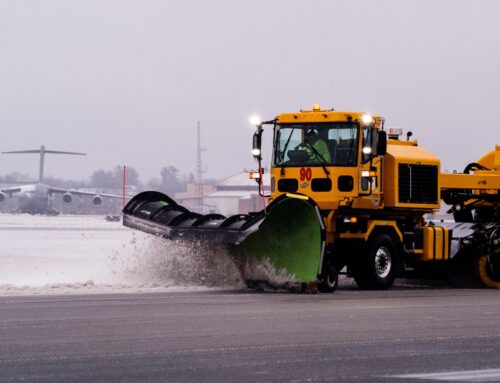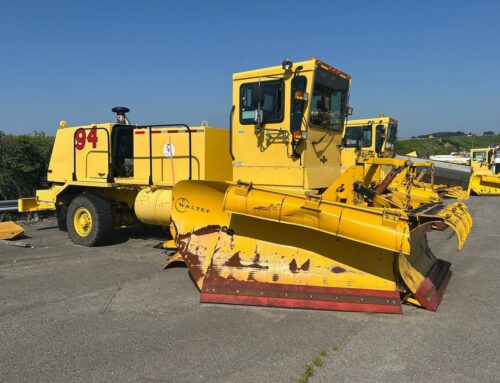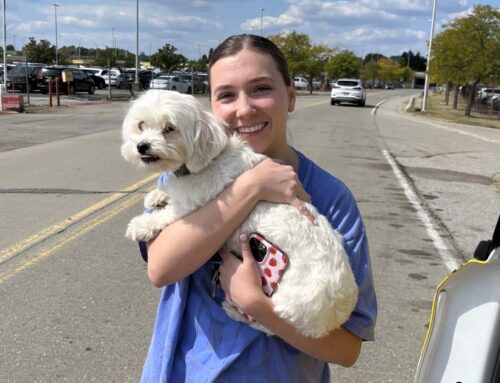From the Flight Deck: Well Done, PIT!
Captain names airport crew MVP after clearing runway for Penguins plane during winter storm
By Capt. Bob Clager
Published February 4, 2019
Read Time: 4 mins
Editor’s Note: In the early morning hours of Jan. 20, a flash freeze followed by sleet, ice and snow from Winter Storm Harper created challenging conditions for crews clearing the runways at Pittsburgh International Airport. At 5:30 a.m., an urgent call came from the tower. A Boeing 737 was about 100 miles out with the Pittsburgh Penguins hockey team onboard. In this first-person account, Capt. Bob Clager, a former Navy pilot and 20-year veteran with Miami Air, describes the landing.
“Winter is coming.”
That was the tongue-in-cheek text I awoke to Saturday night as I prepared to fly Pittsburgh’s hometown hockey club back from Las Vegas after a 10-day road trip to California, Arizona and Nevada.
Winter Storm Harper was due to wrap up hours of rain, sleet, ice and snow, with rapidly decreasing temps and strong, gusty winds just in time for my intended arrival in Pittsburgh at 6 a.m.
My colleague who sent the text was already in Pittsburgh, waiting for our arrival, hoping to continue on with another charter as soon as the aircraft could be turned around on Atlantic Aviation’s ramp. His immediate challenge was to survive the hotel van ride to the airport on the frozen roads that Pennsylvania’s governor had requested everyone to avoid.
Every year these winter storms inevitably lead to mishaps, causing highly competent aviators find themselves sliding off the prepared surfaces at airports. By the time I was to leave Vegas on Saturday night, Winter Storm Harper had already seen at least two sliding planes: A Southwest 737 on Thursday in Nebraska and a United 737 Friday at O’Hare. Luckily, there were no injuries during the incidents.
I didn’t want to be “That Guy” in my 737 (and with Sidney Crosby on board, no less.)
I had been monitoring the storm’s progress all Saturday afternoon. The precipitation was more or less steady rain at temperatures a degree or so above freezing, low clouds, with light winds from the East-Northeast.
The forecast was far more ominous, as the temps past midnight were to plunge rapidly into the teens by my early morning arrival, with moderate, steady snow and winds out of the North-Northwest at 20 knots, gusting to 30.
This forecast dictated my three main priorities:
- Arrive with enough fuel to have options…to hold until the airport was ready to receive my approach and landing on the preferred runway, or, if unable, to divert to an alternate airfield that was not in the midst of the winter storm.
- Land on the preferred runway (and remain on the paved surface).
- Minimize the taxiing distance to Atlantic Aviation’s ramp (and stay on the paved surfaces).
The preferred runway to minimize the storm’s impact would be PIT’s Runway 14-32. It was plenty long at 8,100 feet, given that the high winds were right down the runway with minimal crosswind trying to separate my wheels from the paved surface. Runway 32 also had the advantage of close proximity to my intended gate: Turn right on taxiway N-3, cross taxiway N, and you’re on Atlantic’s ramp.
Approaching from the west, Air Traffic Control informed us that Runway 32 was not open. (Crews do not typically clear Runway 32 during storms and instead focus on the airport’s three other parallel runways). At 140 miles out, I called the tower and asked if we could still land on Runway 32.
The tower told us that airport crews could clear Runway 32 and evaluate the surface friction for safe landing within about 30 minutes. (PIT Ops Duty Manager Alex Thomas and Assistant Superintendent of Field Maintenance Jim Moorhead had heard the call and quickly adjusted tactics to accommodate the captain’s request.)
The air traffic controllers from Cleveland Center set us up in a holding pattern 80-
100 miles due west of Pittsburgh at 30,000 feet, and we held there for just over 30 minutes. PIT Tower opened Runway 32 and reported safe braking friction readings 3-3-3 (the same as the other open runways).
My First Officer flew a perfect approach in the gusty conditions and nailed the landing on Runway 32, bringing the aircraft to a safe taxi speed with nearly 2,000 feet of the 8,100-foot runway remaining. A quick right turn off the runway and across taxiway N and we were at our parking spot within five minutes of touching down at the airport.
In my 40 years of flying, I have seen few airport operations that can turn major winter weather events into non-events like the professionals at Pittsburgh International Airport. Our customers sit up and take notice as well.
The Penguins were very happy to return safely home to Pittsburgh after their extended road trip, and they were well aware of the winter storm system that could have prevented or significantly delayed their return to an airport with a less proficient airfield maintenance crew.
WELL DONE, Pittsburgh!
Captain Bob Clager is a Florida native, U.S. Naval Academy graduate, and former
Navy aviator presently enjoying his 20th year at Miami Air International, Inc. as a captain on Boeing 737-800 aircraft.






